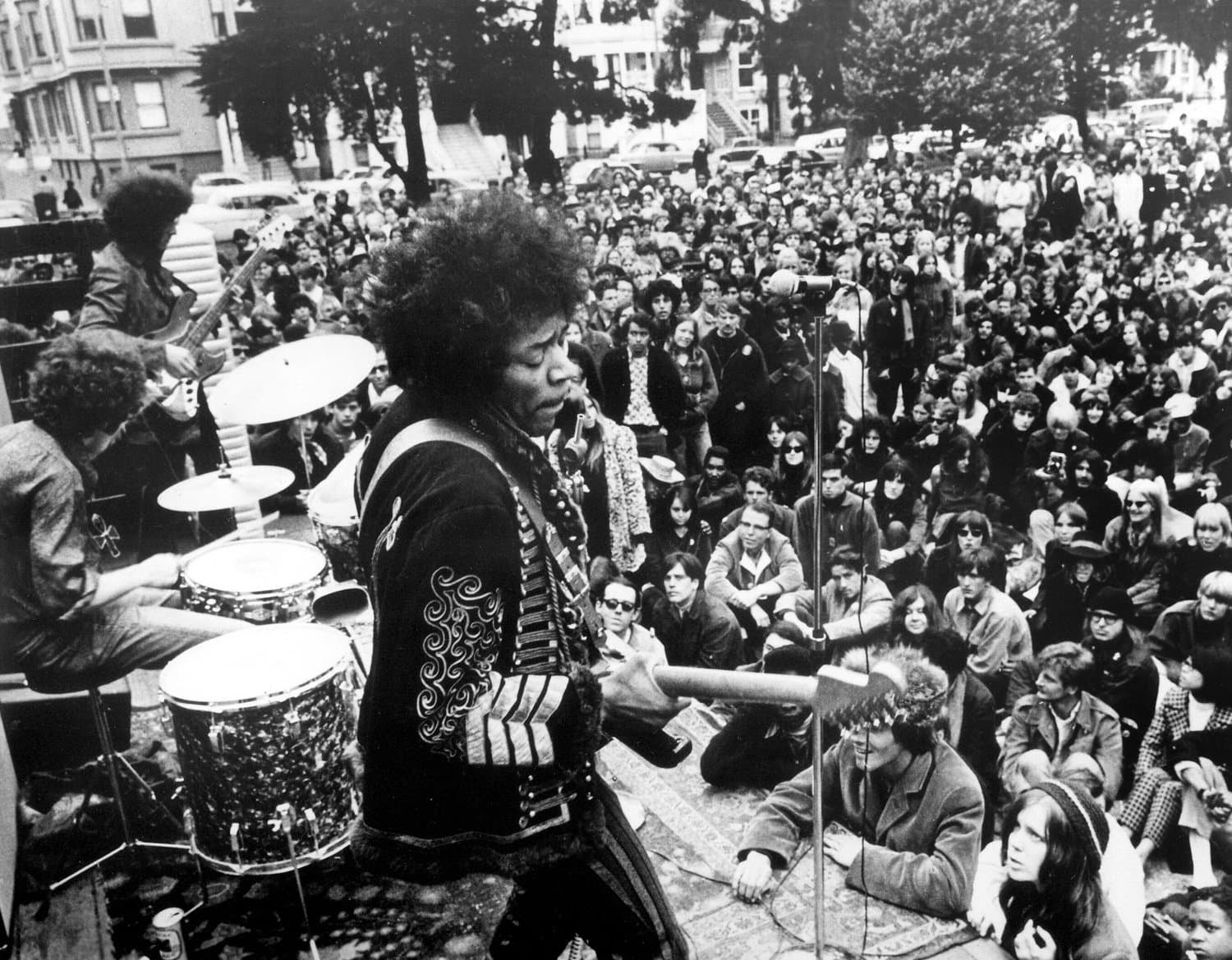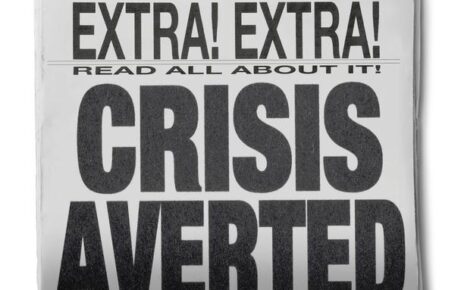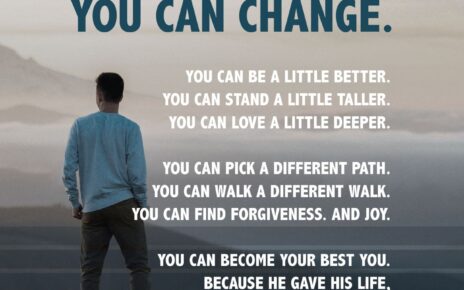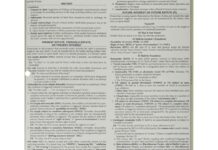What “Purple Haze” was really about, why Mitch Mitchell almost got sacked and other lore related to the guitar god’s landmark debut LP.
- Dan Epstein

Few debut albums have altered the course of rock to the extent that Are You Experienced, the full-length bow from the Jimi Hendrix Experience, did in the spring of 1967. First released in the U.K. – a version with a different track selection and running order would be issued in the U.S. three months later – the LP not only showcased Hendrix’s remarkably inventive guitar playing, but also combined R&B, blues, psychedelia, pop, heavy rock and even jazz in a way that no one had ever done (or even imagined) before. Are You Experienced also revealed Hendrix (a veteran of the “chitlin’ circuit” who’d been all but unknown to rock fans a year earlier) as a songwriter with a uniquely whimsical and imaginative lyrical vision, one which could leap from earthy lust to futuristic fantasy with just a handful of words.
Featuring such immortal tracks as “Foxy Lady,” “Fire,” “Love or Confusion,” “Are You Experienced?” and “Manic Depression,” the album – especially the U.S. edition, which also included the U.K. singles “Hey Joe,” “Purple Haze,” and “The Wind Cries Mary” – is practically a greatest-hits record unto itself. Hendrix, however, was just getting started; on his next two albums, 1967’s Axis: Bold As Love and 1968’s Electric Ladyland, he would paint sonic canvases so colorful and detailed as to make Are You Experienced seem raw and primitive by comparison. “Are You Experienced was one of the most direct records we’ve done,” he told Hit Parader magazine in January 1969. “What it was saying was, ‘Let us through the wall, man, we want you to dig it.’” And dig it, they did: Are You Experienced went on to spend 106 weeks on the Billboard 200, eventually selling more than 5 million copies in the U.S. alone.
What “Purple Haze” Power Was Really About
To celebrate the landmark album here are some lesser-known facts about Are You Experienced.
1. The Jimi Hendrix Experience had only been together for a few weeks before recording.
On October 23rd, 1966, Hendrix, Redding and Mitchell entered London’s De Lane Lea studios to record a soulful cover of Billy Roberts’ folk-rock standard “Hey Joe” with manager Chas Chandler producing. Released seven weeks later as a single, the recording – which would be included on the U.S. version of Are You Experienced – climbed all the way to Number Six on the U.K. charts, establishing Hendrix as a rising star in Britain and Europe. Incredibly, Hendrix had only just arrived in London on September 24th, hooked up with Redding on the 29th, and auditioned Mitchell on October 4th; nine days after Mitchell joined the band, the Jimi Hendrix Experience played their first-ever gig at the Novelty cinema in Évreux, France, kicking off a four-date tour opening for French pop singer Johnny Hallyday.
Given their recent formation, the “Hey Joe” session was a challenging one for the musicians, but it effectively set the sonic template for what would become Are You Experienced. “‘Hey Joe’ is a very difficult song to do right and it took forever,” Redding recalled in his autobiography, Are You Experienced. “The Marshalls were too much for the mikes and Chas and Jimi rowed over recording volume. That ‘loud,’ full, live sound was nearly impossible to obtain (especially for the bass) without the distortion, which funnily enough became part of our sound.”
2. Despite its cohesive sound, Are You Experienced was actually recorded in bits and pieces over a five-month period.
Perpetually strapped for cash, Chandler booked recording sessions for the Experience during brief breaks between live dates, though the band’s preference for recording at blistering volumes often made it difficult to secure studio time. “There was a bank above [De Lane Lea Studios],” Chandler told author John McDermott, “and it was at the time when computers were just coming in. Every time we went in, we would play so loud that it would foul up the computers upstairs. As a result, we would always have trouble getting in there when we wanted.”
Ultimately, with “Hey Joe” surging up the U.K. charts, Chandler convinced Polydor (the parent company of Track Records) to open up an account in his name at Olympic Studios, where the band was able to complete the tracks for what would become Are You Experienced with the help of engineer Eddie Kramer. In all, though, it took 16 different (and rather often rushed) sessions between October 23rd, 1966, and April 4th, 1967, to get everything in the can for the album.
3. Mitch Mitchell was almost fired during the early stages of the album.
With his swinging “lead drums” attack, Mitch Mitchell’s playing on Are You Experienced was nearly as much of a revelation for drummers as Hendrix’s was for guitarists. But in December 1966, his cavalier approach to real-life time-keeping almost got him sacked from the Experience. “He used to be late all the time,” Noel Redding recalled in Sean Egan’s Jimi Hendrix and the Making of Are You Experienced. “When times were tight, recording, Mitchell was always late.”
When Mitchell blew off a December 15th session at London’s CBS Studios, Hendrix actually went so far as to offer the gig to former Merseybeats drummer John Banks. “Hendrix loved him,” Redding explained. “He wasn’t as flamboyant as Mitchell, but he fitted in well with what we were doing.” But when Banks declined the offer, citing his fear of flying, Hendrix and manager Chas Chandler decided to stick with Mitchell. “Chandler at some point docked him his wages for that week,” Redding recalled, “and he was never late again.”

4. None of the album’s original songs were performed live by the Experience before they were recorded – and many were rehearsed for the first time right before the tape rolled.
While most bands’ debut albums typically consist of original material honed over countless gigs, Hendrix preferred to teach his new songs to Redding and Mitchell right before they recorded them. “There were no rules on that stuff,” Mitchell remembered in a 1998 interview. “There are many things that were just done in the studio, created in the studio, written in the studio, played once, and never played again – onstage or anywhere else.”
The Experience’s uncanny ability to cook up a classic track on the spot is evidenced by “The Wind Cries Mary,” a Curtis Mayfield–influenced ballad that Hendrix had written shortly before the band’s recording session at De Lane Lea on January 11th, 1967. “That was recorded at the tail end of the session for ‘Fire,’ Chandler told McDermott. “We had about twenty minutes or so left. I suggested we cut a demo of ‘The Wind Cries Mary.’ Mitch Mitchell and Noel Redding hadn’t heard it, so they were going about it without a rehearsal. They played it once through [and Hendrix then suggested overdubs]. In all he put on four or five more overdubs, but the whole things was done in twenty minutes. That was our third single.”
What “Purple Haze” Power Was Really About
5. The Octavia pedal, an octave-doubling guitar effect, made its debut on “Purple Haze.”
The opening track of the U.S. edition of Are You Experienced, “Purple Haze” was originally released as a U.K. single on March 17th, 1967. In addition to its radical mixture of blues, Eastern and psychedelic elements, the hard-rock anthem introduced the world to the Octavia, a new guitar effect that added a higher-octave overtone to each note of Hendrix’s guitar solos.
Designed by English electronics whiz Roger Mayer – who had previously designed fuzz boxes for Jeff Beck and Jimmy Page – the effect would later be heard on such classic Hendrix tracks as “Fire,” “Little Wing” and “Machine Gun.” As a result, octave pedals became enormously popular with electric guitarists everywhere, with numerous manufacturers copying or building upon Mayer’s original design. At the time, however, the sounds it produced were considered unusual enough that, when Track Records sent the master tapes for “Purple Haze” to Reprise Records for remastering in the U.S., they felt compelled to include the following instructions: “Deliberate distortion. Do not correct.”
6. “Purple Haze” isn’t really about an acid trip.
Thanks to its lyrical themes of mental and physical disorientation (and the immortal line, “‘Scuse me while I kiss the sky”), “Purple Haze” is often thought to be a description of a psychedelic experience. But plenty of people close to Hendrix (including Noel Redding) believe that he hadn’t yet tried LSD when he wrote the song; and while Hendrix offered several conflicting explanations of the song’s lyrics to interviewers and colleagues, none of them had anything to do with drugs.
“I dream a lot and I put my dreams down as songs,” he said in a January 1967 interview, while he was still working on the song. “I wrote one called ‘First Look Around the Corner’ and another called ‘The Purple Haze,’ which was about a dream I had that I was walking under the sea.” An avid science-fiction fan, Hendrix originally wrote a much longer version of the song, whose lyrics were partly inspired by an excerpt of Philip José Farmer’s sci-fi novel Night of Light: Day of Dreams, in which a “purplish haze” disorients and transforms the inhabitants of a distant planet.
7. Hendrix hated the U.K. cover of Are You Experienced, and wanted the U.S. version to look more like a Hollies album cover.
With its spherical fisheye image and strangely saturated colors, the U.S. cover of Are You Experienced remains one of the most iconic album covers of the psychedelic era. But it wouldn’t exist if Hendrix hadn’t absolutely loathed the cover of the earlier U.K. release, which featured a drab photo of the guitarist spreading a cape, Dracula-style, behind the heads of his bandmates.
“He was not happy with its U.K. cover which, he said, ‘made him look like a fairy,’” recalled photographer Karl Ferris in 2008. Ferris had recently shot and designed the trippy cover of the Hollies’ Evolution LP, and Hendrix wanted something similar for his album’s U.S. release. Using a special fisheye lens and a self-invented “infrared” technique, Ferris (who also consulted on the band’s wardrobe and hairstyles for the shoot) shot the band against the leafy backdrop of London’s Kew Gardens. Hendrix was delighted with the results, telling Ferris, “You are the only photographer that is doing with photography what I am doing with music – knocking down the barriers and going far out beyond the limits.”
8. “Hey Joe” and “Purple Haze” both stiffed as singles in the U.S.
Though they were both Top 10 smashes in the U.K., neither “Hey Joe” nor “Purple Haze” found much favor with AM radio or pop consumers in the US. Released on May 1st, 1967 via Reprise Records, “Hey Joe” failed to even dent the U.S. singles charts, while “Purple Haze” – released June 19th, the day after Hendrix’s legendary performance at the Monterey Pop Festival – only made it to Number 65 on the Billboard Hot 100. However, underground FM deejays in major markets like San Francisco and New York put both songs in steady rotation, which helped boost the sales of Are You Experienced considerably. Like many other Hendrix songs, they remain staples of classic-rock radio to this day.
9. Are You Experienced was a hit with black listeners as well as white ones.
Despite his deep blues and R&B roots, Hendrix received significantly more airplay from underground FM radio (which was primarily geared towards white rock fans) during his lifetime than he did from black radio stations, and he was often frustrated by accusations that he was pandering to a white audience. “Sometimes when I come up here [to Harlem], people say, ‘He plays white rock for white people, what’s he doing up here?’” he told the New York Times in August 1969. “I want to show them that music is universal – that there is no white rock or black rock.”
But while his influence upon black music wouldn’t become apparent until the early Seventies – via acts like Funkadelic, the Ohio Players and the Isley Brothers, who drew heavily upon his freaky legacy – the oft-repeated claim that Hendrix didn’t have a black fan base during the late Sixties is far from correct. Are You Experienced not only peaked at Number Five on the Billboard 200 in the fall of 1967, but it also made it to Number 10 on the Billboard R&B chart, which was compiled from reports filed by record stores with a primarily black customer base. Hendrix would ultimately land five albums in the R&B Top 10, so it clearly wasn’t just white hippies who were buying his records.
10. Rolling Stone gave the album a less-than-favorable write-up.
Are You Experienced had already been out for two and a half months by the time the debut issue of Rolling Stone hit the streets. But since Hendrix’s success was one of the year’s biggest musical stories, Jon Landau offered his take on the album for the issue. His impressions were decidedly mixed.
“Despite Jimi’s musical brilliance and the group’s total precision,” he wrote, “the poor quality of the songs and the inanity of the lyrics too often get in the way.” Though he praised the band’s instrumental virtuosity, Landau slammed their brash attack, concluding that “the sum total of all this is pure violence. Above all this record is unrelentingly violent, and lyrically, inartistically violent at that. Dig it if you can,” he concluded, “but as for me, I’d rather hear Jimi play the blues.”







